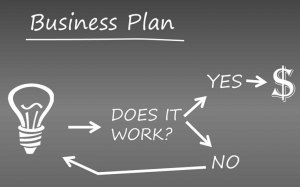In the ten years I have been working with leaders of very large companies I have realised one thing above all. There is not a lot of good business strategy out there.
I understand that there is a feeling that strategy is passé. I have heard the cry that the world is moving too fast to create, let alone put in place, a strategy. This is actually not true. Research cited in the Economist shows that company cycles in some areas are getting longer, not shorter.
So why plan – because that is how to become a disruptive force. That is how you win. My analysis over the last year tells me that the most disruptive companies have well planned and well executed strategies. Also competitive advantage is less sustainable so change is more necessary – and when you change knowing the risks and adjusting for them is important.
So what is wrong with Strategy – why is it not a given that it will work as a business tool. I think there are 5 mistakes that companies often make.
5 business strategy mistakes
1) Companies don’t understand what strategy is. Confusing strategy with something else is surprisingly common. Beliefs are the basis of any company. Goals are pretty constant. Strategy should the current best way of achieving the goals. It must be flexible. Tactics should be elastic and the things you do to carry out the strategy.
2) Strategy is not a document produced in isolation. It is not actually a document. It is a set of plans that focus the resources of the company towards achieving the goals it has set. There are at least 3 different business strategies: Investment, Product, Market. To that I would add Innovation strategy and Technology strategy. An incomplete set of plans are often produced because companies have no real idea of the importance of a good strategy. Inconsistencies in planning strategy are as wasteful as inconsistencies in planning a construction project.
3) Strategy has to be dynamic to be useful. This is hard. When planning for the future one has to make assumptions. Humans don’t deal very well with unknowns so they tend to treat assumptions as givens. That creates risk. The only way to deal with assumptions being wrong is to check them regularly. The more regularly the less risk. Once a year is not enough for many things.
4) Strategy must be based on as much fact as possible. When developing a strategy much is unknown. Fair enough. But you can postulate what changes are possible in the future. From that you can build conditions that refine the strategy as events unfold. Incorporate facts that aren’t facts yet – options and triggers – into your strategy. Not including information that is available about your customers, about technology, or about the business environment is inexcusable. Research is fundamental and should be risk adjusted.
5) Strategy, to be useful, needs to be communicated. Again this is hard. Especially as it is not just about “top-down” pronouncements from on high. Good strategy invites questioning and incorporates learning from the field to make it clearer or assimilate new information.
All 5 of these problems can be avoided. In fact they must be avoided to produce a useful strategy. The good news is that techniques exist to manage all of the issues above. I will be looking at some of these that I have used successfully in coming blogs.


